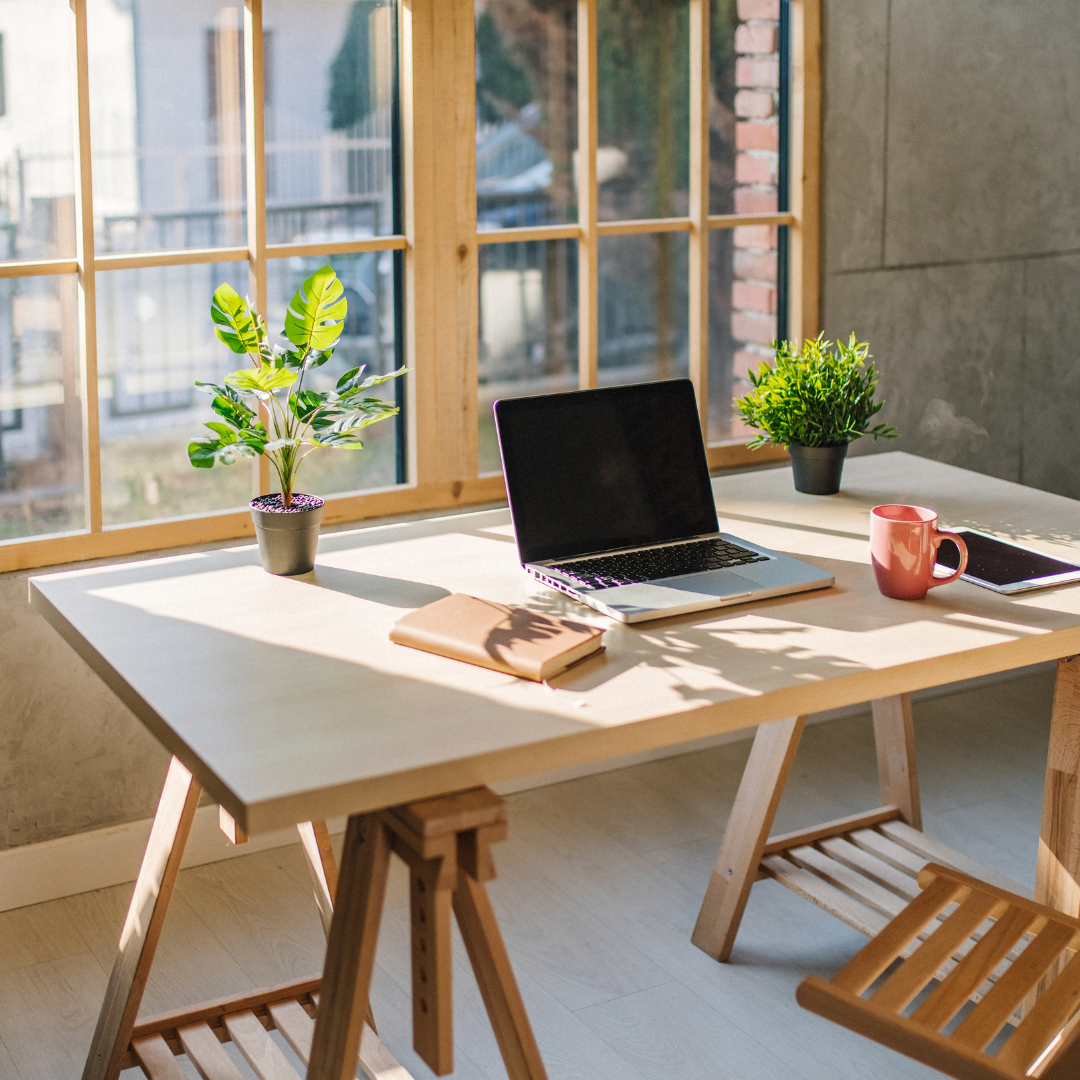Taking care of yourself goes beyond a facial and massage. Whether it’s for work or personal reasons, most of us spend a lot of time on our computers and other devices. With all of the time that we spend digitally creating, communicating, and consuming content comes an endless pile of data. Set aside some time to get yourself and your digital devices organized and refreshed.
5 Ways to Digitally Rejuvenate
 Digital self-care (yes, it’s a thing) encompasses so much more than sorting that pile of tangled-up cords behind your desk, cleaning your screens, and replacing batteries. Although those things are important, minimizing your stress requires a deeper analysis of your digital assets. Going beyond the surface level and getting your digital life organized will help you reach your goals, and your future self will thank you.
Digital self-care (yes, it’s a thing) encompasses so much more than sorting that pile of tangled-up cords behind your desk, cleaning your screens, and replacing batteries. Although those things are important, minimizing your stress requires a deeper analysis of your digital assets. Going beyond the surface level and getting your digital life organized will help you reach your goals, and your future self will thank you.
First things first, take a deep breath. Before you dive in and start channeling your inner minimalist and mass-deleting files, take some time to back everything up. Make sure all your documents are synced to the cloud in case you accidentally discard something you need. Don’t be hasty!
1. Organize Your Files
Going through your files is time-consuming, but it’s worth it. Nothing is worse than not being able to find what you're looking for. Cleaning out your files will make it easier to access the information you need when you need it. Start by taking an inventory of what types of files you have. Don’t forget to go through the sneaky content hiding in your downloads folder that’s sitting around taking up precious space.
Combine Files
There are definitely some themes within your files that you can group together. Categorizing your files based on specific projects, dates, and file types ensure that everything has a home and is easy to find. Don’t go overboard with combining files. It’s overwhelming to get more than 3 or 4 layers deep, but placing too many files on your desktop isn’t the answer. Think of your desktop as your desk. Designate your desktop as a temporary place for file storage. Consistent naming conventions can help you create the ideal system for optimal sorting and identification. Be descriptive (and consistent) when you’re naming files by using dates and version numbers. Keep up with your new system by setting reminders to review files, delete what you don’t need, and back up what you do.
2. Clean Out Your Email
You probably received an email (or seven) while reading this blog. The first priority is to start fresh when you're getting ready to organize your inbox. You don’t want to miss or get distracted by the emails you receive while you're focusing on cleaning out your inbox so create a separate folder for the content you’re going through. Now that you’ve got you’ve created this productivity bubble for yourself, it’s time to get to work. Picture the inbox of your dreams. Define what you want to keep, not what you want to get rid of. The key to successfully cleaning up your inbox, as it is in most other places, is to bite the bullet and power through. Completing this in one sitting is the most effective method, because if not now, then when?
Create A Timeframe System
Your messages spawn in your inbox, but once you see them, you should move them into a folder based on when they require your attention. All of your messages regarding meetings, tasks, deadlines, projects, etc., can be consolidated into a time frame system. For example, think: does this need my attention today, this week, or sometime later in the month? Along with separating your content by time frame, it’s smart to create a place to store additional notes. Here you can store the information you don’t need to respond to, but you may need to read or refer back to. Keep it simple, you really don’t need more than 5 folders.
Junk Mail
Target one or two common keywords, sender addresses, or names, and filter them in search. For example, any automated messages. This way you can break down the process and go through your emails in smaller batches. Most of us are signed up for newsletters which simply take up space in your inbox and steal time from your day. Delete these and even go one step further and unsubscribe from the junk mail.
3. Sort Your Photos
 This one can be kind of fun, and hey - maybe you’ll find a #ThrowbackThursday in there. As you’ve probably picked up by now, deciding on a system is the first step when it comes to getting organized. Create folders for specific time frames, instead of generic topics like Family and Friends, Travel, etc. There’s too much overlap and it can get complicated fast. With over 1.8 trillion digital photos taken last year, our guess is you're probably paying for extra cloud storage you don’t need. While you’re going through and reorganizing your photos, you can simultaneously delete all the duplicates and random screenshots.
This one can be kind of fun, and hey - maybe you’ll find a #ThrowbackThursday in there. As you’ve probably picked up by now, deciding on a system is the first step when it comes to getting organized. Create folders for specific time frames, instead of generic topics like Family and Friends, Travel, etc. There’s too much overlap and it can get complicated fast. With over 1.8 trillion digital photos taken last year, our guess is you're probably paying for extra cloud storage you don’t need. While you’re going through and reorganizing your photos, you can simultaneously delete all the duplicates and random screenshots.
4. Go Through Your Contacts
Clean up your contacts. If you can’t think of a scenario where you’d contact a specific individual, it might be time to remove them from your phone. Make sure every contact is merged and all of those old numbers are deleted. Additionally, you can add birthdays and addresses, along with all of their contact methods in order to keep all of their information in one place.
5. Review Your Bookmarks Bar
Going through your bookmarks bar only takes a few minutes, but we promise it will make you feel more put together. Think about what sites you actually visit every day. Organize your bookmarks by how often you visit them. Delete old bookmarks you haven’t used in the past few months.
Be Proactive
Your efficiency will drastically improve when you create a system that you can keep up with. After you’ve put in all of this work to get yourself back on track, don’t let it be a waste. Taking 3 minutes at the end of your workday to put everything in its place will help you start off the next morning feeling refreshed. Building habits isn’t always easy, but staying on top of organizing your workload will increase your productivity and success in the short and long term.
A house is not a home. You hear it all the time about the physical spaces you spend your time in, so the same goes for your digital spaces. Change that desktop picture, add shortcuts, and do whatever adds that homey feeling. Make your space somewhere that you don’t dread spending time. Studies have found that digital clutter can affect your productivity in the exact same way a messy office does. It’s overwhelming to dig through the clutter. Don’t let your digital workspace get out of hand.




